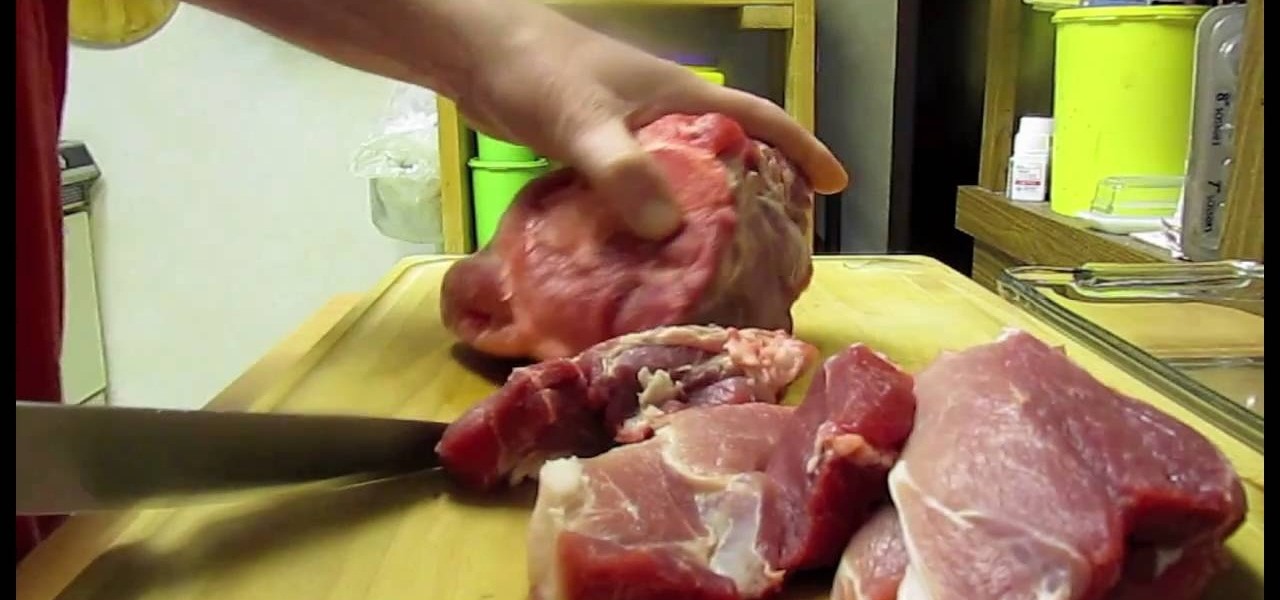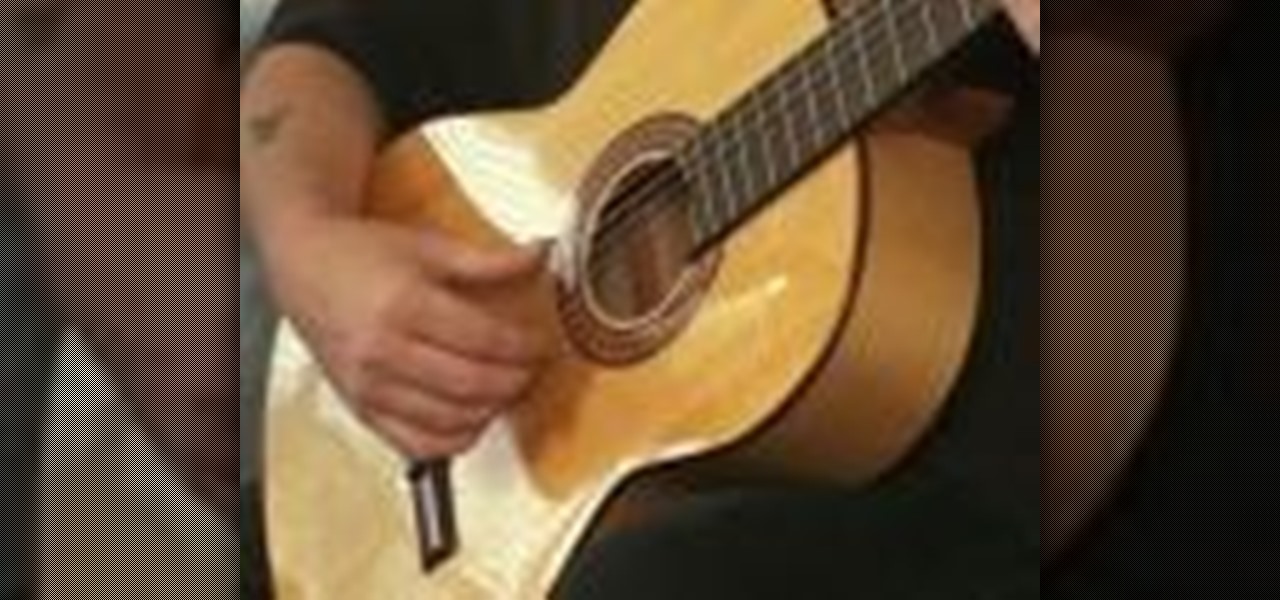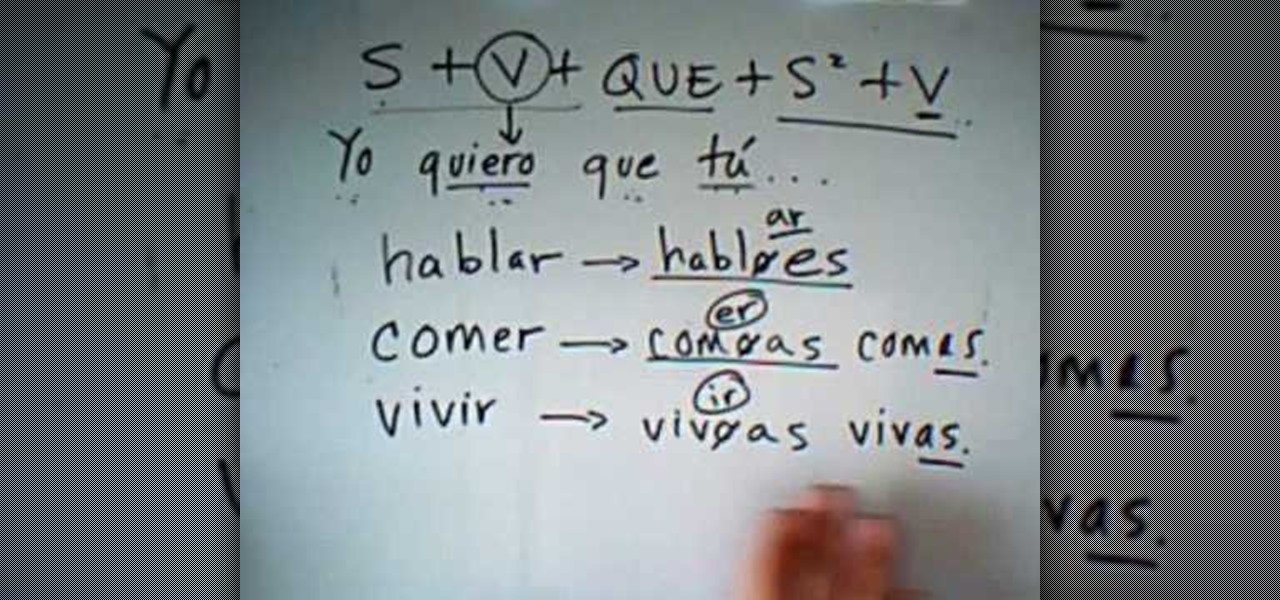
This lively video explains how to discuss future plans in Spanish. Professor Jason explains that it's not that difficult for English people learning Spanish as the same construction is used for 'going to'. There is also a separate future tense, using one set of endings that you simply add to the infinitive, but adding a stress on the final syllable, except for the first person plural. Of course, it's not quite so simple with irregular verbs, which have a special stem which has to be learned b...

Jessie Pray shares her recipe for her famous "Spanish Fly Sangria". To make Spanish Fly Sangria, do the following: Nothing will be measured. Put some ice in a pitcher or bowl. Add some oranges slices, lemon and lime wedges and some apples to the pitcher. Add about a half bottle of cheap red wine. Add some brandy, Triple Sec, and Grand Marnier to the mix. Add some lemon-lime soda, or even some fruit juice. Shake, pour into a glass and do a quick taste test.

Check out this instructional guitar video that shows you how to play the song "Seabreeze" by Tyrone Wells. This demonstration is taught by Tyrone Wells himself. You will need a guitar, a willing heart, a love for music, and fingers. Follow these simple steps to play "Seabreeze": The introduction starts with a G chord and then switches to a C chord. Then from the C chord it switches to an Em, and then to an E over F#. The ring and pinkie finger stay in the same position. Repeat Step 1 and then...

In this video, we learn how to speak Spanish: Antes de / DespuŽs de + verbs. When you say "antes de" this means before and "despues de" means after. Saying these in sentences can help describe doing something at a specific time. The formula for this is to have the "antes/despues de" + an infinitive. Learning some basic reflexives can help you describe what you are doing. For example, "levantarse" means to get up. You will change the tense of the verb depending on when you did it, then change ...

In this video, we learn how to speak Spanish: Present tense of -AR verbs (tu form). When you are speaking with "ar" verbs, you will have to change them depending on who you are talking about. You will also have to change if you are talking about yourself and depending on what the tenses are. If you are talking about yourself drawing, you would say "yo dibujo", which means "I draw". You will say "tu dibujas" if you are saying "you draw" to a group of people. Learn some common "ar" verbs, then ...

In this video, we learn how to use direct objects & direct object pronouns in Spanish. A direct object is the object of the subject inside of a sentence. An example of this is "yo contesto el telefono". The direct object in this sentence is "el telefono" and the subject is "yo". The direct object is the "what" of the sentence, not the who. Another example of this is "nosotros miramos las peliculas". In this sentence, the subject is "nosotros" and the direct object is "las peliculas". Pay clos...

In this video, we learn how to speak Spanish using present tense AR verbs. "Nosotros" means "we", "nosotras" means we as well, it's just talking about a female while the other is talking about a male. Common "ar" verbs include: necesitar, patinar, practicar, terminar, tocar, trabajar, nadar, hablar. These mean (in order): to need, to skate, to practice, to fish, to play, to work, to swim, and to talk. When you are talking about a male, female, or group of people you need to change the last pa...

In this tutorial, we learn how to make a vegetarian Spanish-style paella. You will need: 1 tbsp olive oil, 1 bay leaf, 1/2 onion, 1.5 c Basmati rice, 1 clove garlic, 1/2 vegetable bouillon, 1/2 green bell pepper, 1 tsp tomato paste, 1 small tomato (chopped), 1 chopped tomato, 3 c water, saffron, salt, and fresh thyme. First, sautŽ your onion with garlic and bell pepper in a skillet with olive oil. Next, add in the tomato and saffron, then add in the bay leaf, rice, and herbs and mix thoroughl...

This video demonstrates how to pronounce Spanish vowels. From the people who brought you the Dummies instructional book series, brings you the same non-intimidating guides in video form. Watch this video tutorial to learn how to pronounce Spanish vowels, For Dummies.

Don't get burned playing with fire——know how to play with it right, just like those crazy magicians do when it comes to magical fireballs that you can hold in your hand. You can juggle them, too, but you need to know the secret to making them safely.

If you've never been a big fan of alcohol because it tastes too strong and bitter, then you should definitely give sangria a try. Sangria is a native Spanish drink that includes a mixture of a light wine (usually fruit flavored), chopped fruit, spices for an extra flavor kick, and a sweetener like honey or orange juice.

In this video, we learn how to use the imperfect or past subjunctive in Spanish. When you are speaking in first person, you are going to use the singular "yo". If you are speaking in plurals, you will us "os", such as "nosotros". For second person familiar, you will use "tu", then for second person formal you would say "usted". For third person, you will say "el". When you talk in second person familiar and formal you will stress the second syllable in the word. Dissect the sentence to find o...

In this video, we learn how to speak Spanish by using the present tense of AR verbs. For females, "ellas" means they and for males "ellos" means they. To say "you all" you would say "ustedes". For example, the word "trabajar" would knock the "ar" off depending on who was the subject in the sentence. It would be replaced with "o", "as", "a", etc depending on who was being talked about. This goes the same for every verb that ends in "ar". The tense must change when you are talking about singula...

This video shows you how easy it is to make Mexican (Spanish) rice. You start with a pan on medium heat.1 tablespoon of oil, 2 cups of long grain rice. Long grain rice because it’s good for this type of meal. You can get the rice in packets that you won't have to wash the rice. You want a to cook the rice until it gets a little color. Then add 1/2 cup of chopped large onions for 1 minute, 1 can of kidney beans washed and drained, 1 medium bell pepper chopped, and 1/2 teaspoon garlic powder, 1...

10 conversational Spanish phrases that you can use in a coffee shop. Includes ordering drinks and asking about wireless Internet. Subtitles are included for help with pronunciation. Speak Spanish at a coffee shop.

10 conversational Spanish phrases for use in a restaurant including ordering food and talking with your waiter. Subtitles are included for help with pronunciation Speak Spanish in a restaurant.

Here are 10 easy Spanish phrases that you can use on a camping trip or while hiking. Subtitles are included for help with pronunciation Speak Spanish when camping.

This is an interactive game for children to learn the Spanish name for parts of the face. Name parts of the face in Spanish.

This how-to video is about how to color correct photos using Photoshop levels.

Capture the beauty of the largest land-living animals, the giraffe, in a simple drawing. You needn't be an experienced artist to sketch this giraffe, it's easy enough for anyone. If you want, try expanding upon this ungulate mammal drawing of the giraffe, make it more detailed, illustrate it with its well-known colors. "Jirafa" is the Spanish translation of giraffe.

If you like the dragon art in Japanese and Chinese culture, then you know the intricateness of the artwork. But you can make your own simplified version at home with some paper and a pen. This video will show you the step-by-step details to drawing a Japanese-style dragon. "Dragón" is the Spanish translation of dragon.

The upcoming web series "Crypto-Historians" does for cryptohistory what Indiana Jones did for archaeology. For those who don't know, cryptohistory is the study of supernatural or alien elements throughout history, and yes—it's a "real" field.

"Adobada" literally means "marinaded" in Spanish, so "carne adobada," or marinated meat, is an appropriate description for this succulent marinated pork shoulder. This carne adobada is marinated in a mixture of hot sauce, worchestershire sauce, garlic powder, and pepper, then topped with onions.

Paella, the classic Spanish dish of chicken, prawns and rice is one of the most commonly cooked dishes around the world. You can mix things up by tweaking the ingredients such as substituting basmati rice. This video will show you how to cook an Indian style paella.

Chef Jose from Made In Spain is here with some authentic Spanish cooking to teach you. Join Jose as he cooks up some yummy baby squid with caramelized onions. This recipe is incredibly simple and full of rich flavor. Enjoy it as a snack at work or make it for dinner at home.

A variation on a rich and yummy Spanish dessert, this flan recipe is flavored with strawberries instead of traditional vanilla. Learn how to make flan de fresas in your home.

Charles Sedlak shows you to properly tune your guitar in order to play Flamenco. You're just minutes away from playing this Spanish style music, and you can have your girlfriend dance on the table while you pluck those strings.

Originally used by Spanish cowboys for rounding up cattle, the bola is a simple and effective hunting tool. This video shows how to construct and use this weapon so that you can defend yourself, or hunt something, while trying to survive in the wild. You'll need a piece of cord and two equal weights, like some heavy lug nuts.

When it comes to powerful punches, sangria—which takes its name from the Spanish word for "blood"—packs a truly wicked wallop. But don't take our word for it; mix up a batch and let the fiesta begin.

A Mediterranean twist to a classic seafood staple - drizzle with olive oil and serve with a glass of white wine. Savour our octopus Spanish style recipe. Make octopus Spanish style.

How to conjugate in the subjunctive in Spanish for the present tense.

A pajarita is Spanish for a baby parrot. And while you may not be lucky enough to own one, you can certainly fold one!

Want to make sure your sims live in a classy, elegant house? This tutorial shows you how to build a lovely, art deco style mansion from the ground up, complete with multiple stories, a garage, Spanish roofs and an expansive backyard.

Pork picadillo is a Spanish dish that gets its flavor not from gallons and gallons of oil (like most of the restaurant foods we have in the US), but from spices like cloves and cinnamon.

Get drunker faster with this delicious summer recipe! Follow along and pull together all of your ingredients to make a fruity and delicious sangria in just a few minutes. This Spanish specialty works well for any occasion and you will enjoy taking a bite out of the wine soaked fruit in your glass. Enjoy!

A new coat of paint can do wonders for a dull, drab room. But sometimes you want to go a step further. Applying a knockdown texture to the wallboard before painting can help deaden sound, hide any imperfections in the drywall and, more important, provide a warm and rustic feel to the room, similar to Spanish-style stucco. For more, or to get started on your own wall texturing project, watch this DIY video tutorial.

This goes over an error correction technique that you can use in your ESL/EFL (English as a Second Language / English as a Foreign Language) classroom with your Spanish students.

My mom makes a Filipino version of a Spanish dish. This dish was brought to the Philippines a long time ago, and the Filipinos put their own flavor to it. So watch this video to learn how to make arroz a la cubana.

This is a great knot to use if you need two loops in the middle of a line, especially if you do not have access to the ends of the rope. If you need two loops at the end of a line, use the bowline on the bight, but don't bight to hard.

Learn how to make this Great Stellated Dodecahedron from "Tornillo" units. Speak Spanish? Then check out Paolo Bascetta's accompanying diagram:









































